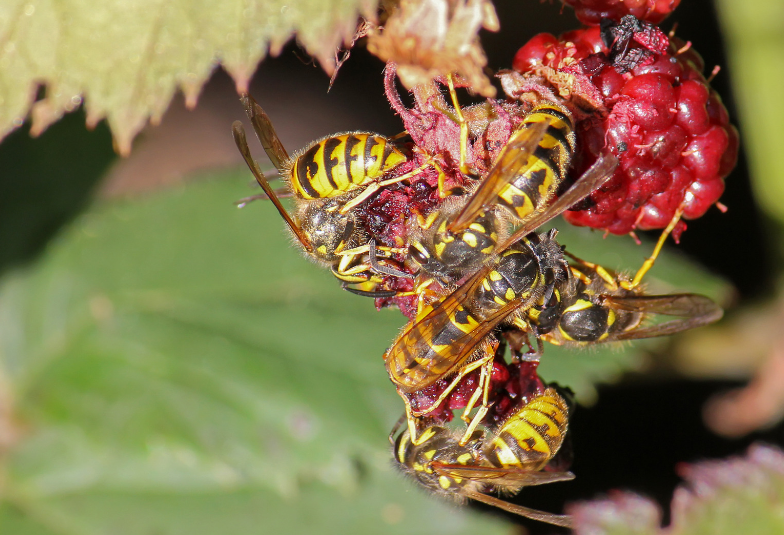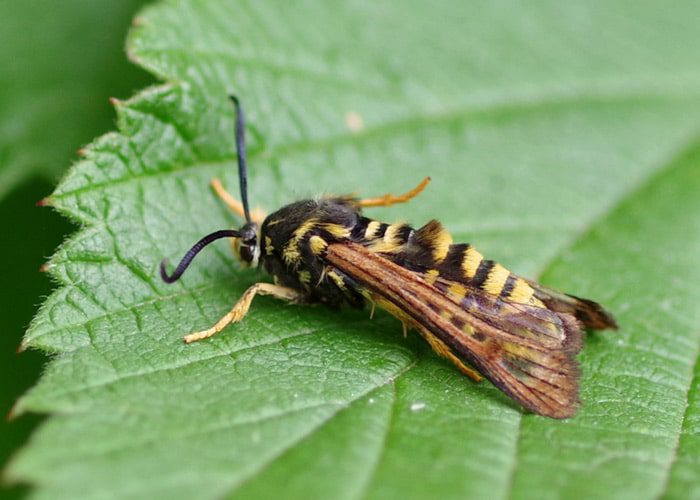Raspberry Crown Wasp Control: Effective Strategies to Protect Your Plants
The raspberry crown wasp, also known as the raspberry borer, is a formidable pest that can devastate raspberry plants. These tiny, reddish-brown wasps lay their eggs in the crown of raspberry plants, where their larvae feed on the developing stems and roots. The damage caused by raspberry crown wasps can lead to reduced yields, plant death, and even the spread of diseases.
You will learn how to protect your raspberry plants from raspberry crown wasps by identifying, preventing, and controlling this pest. You will also learn how to choose resistant raspberry varieties and manage the environment around your plants to make them less attractive to raspberry crown wasps.
Identify, Prevent, and Control Raspberry Crown Wasps
Identifying Raspberry Crown Wasps
- Adult: Small, reddish-brown wasps with clear wings
- Larvae: White, grub-like worms with brown heads
- Habitat: Crown of raspberry plants
- Life Cycle: 2 years
- Signs of Infestation: Wilting, stunted growth, and dead canes

Preventing Raspberry Crown Wasps
- Plant Resistant Varieties: Some raspberry varieties naturally resist raspberry crown wasps.
Raspberry varieties naturally resistant to raspberry crown wasps have specific characteristics that make them less attractive to pests. These characteristics may include:
- Physical barriers: Some varieties have thicker bark or thorns, making it difficult for the wasps to lay their eggs.
- Chemical defenses: Some varieties produce chemicals that repel the wasps.
- Genetic resistance: Some varieties have genes that make them immune to the wasps.
Not all raspberry varieties are resistant to raspberry crown wasps. However, several varieties are relatively resistant to the pests.
Some of these varieties include:
- Autumn Bliss
- Joanna
- Jewel
- Meeker
By choosing raspberry varieties naturally resistant to raspberry crown wasps, you can reduce your risk of infestation and enjoy a healthier, more productive raspberry patch.
- Practice Good Sanitation: Remove and destroy infested canes, clean up fallen leaves and debris, and avoid overwatering.
- Create a Barrier: Surround your raspberry plants with insecticidal soap or use a physical barrier, such as chicken wire, to prevent pests from entering.
Controlling Raspberry Crown Wasps
- Handpicking: Handpick adults and larvae whenever possible.
- Insecticidal Soap: Spray affected plants with insecticidal soap to kill adult wasps and larvae.
- Biological Control: Use beneficial insects, such as parasitic wasps and tachinid flies, to control raspberry crown wasps.
- Synthetic Pesticides: Use synthetic pesticides as a last resort, as they can harm beneficial insects.
Following these tips can effectively protect your raspberry plants from raspberry crown wasps.
Methods of Fighting
There are ways to rid your raspberry patch (or containers) of this pest. But, unfortunately, it can take up to two years of permanent treatment to completely break the pest’s life cycle.
Insecticides containing pyrethrins are considered to be the most effective.
Apply the solution directly to the plant’s crown early in the spring and fall after harvesting.
This will kill the larva heading down the canes to bore into the peak for the winter.
Insecticides targeted directly at the crown and base of the canes in fall and early spring before the larvae tunnel have an excellent success rate.
If the infestation is beyond control, dig up, discard the plant in the garbage, or burn it.
Start over again fresh with good-quality rootstock and new soil.

Sneaky Insects
Wasps and bees, of course, are armed with a stinger to ward off potential predators.
They advertise their painful defense with a bright and distinctive color pattern. This allows animals who have experienced their defense to learn who they are and avoid future lessons quickly.
“Once bitten, twice shy” is a common theme in Nature. But this “show
and tell” system is exploited by several enterprising harmless insects that are colored just like a stinging insect.
So why bear this guise when they are harmless? They do so because they gain protection. Any predator with a previous nasty experience with one of the real McCoys will also avoid one of the harmless look-alikes.
This remarkable phenomenon is known as ‘Batesian Mimicry,’ named after its discoverer, the English entomologist Henry Bates.
Batesian mimics are found in many insect groups. In butterflies, harmless Viceroys look7 convincingly like distasteful Monarchs. Raspberry Crown Wasp moths perfectly resemble
Yellowjacket wasps. Flower Beetles look like Bumble Bees. But of all the groups that contain “dishonest” members, none exceed the Flower Flies for ingenuity and complexity of disguise.
Many Flower Flies (aka Syrphids) look just like wasps, bees, or hornets. Some enhance their deception by creating buzzing sounds.
As adults, Flower Flies eat pollen and nectar, but as larvae, many eat other insects, with aphids being a favorite food.
But it is the adult flies that have attracted the attention of entomologists and insect photographers worldwide. Their more than 6,000 species offer myriad colors and forms to admire and record.
Novices have a hard time telling Flower Flies from their armed models. One way is to examine the antennae; bees and wasps bear thread-like structures, while Flower Flies is pita-shaped with a protruding filament.
Another method is to count the wings: flies have two while stinging insects have four (but beware, many Flower Flies have bi-colored wings to give the impression of owning four).
If still unsure, you can catch one in your hand. You will soon learn whether you have a mimic or its model!
If you find this article interesting, please share it with your friends. Thank you.


























